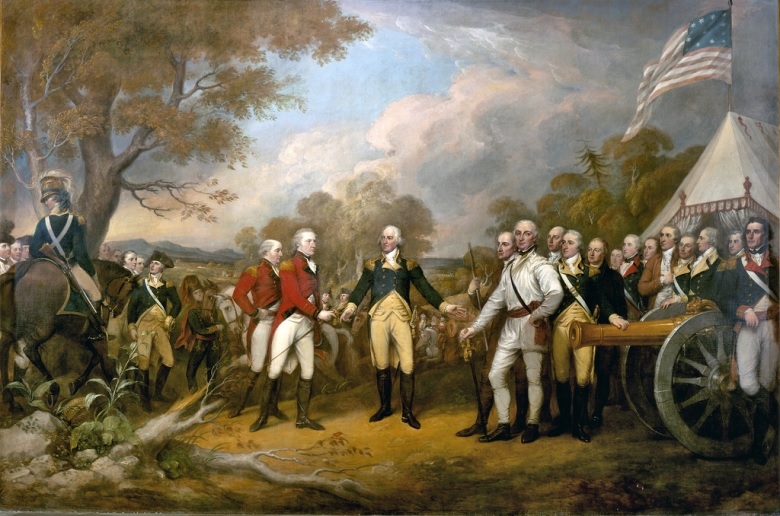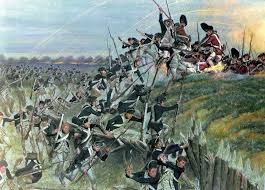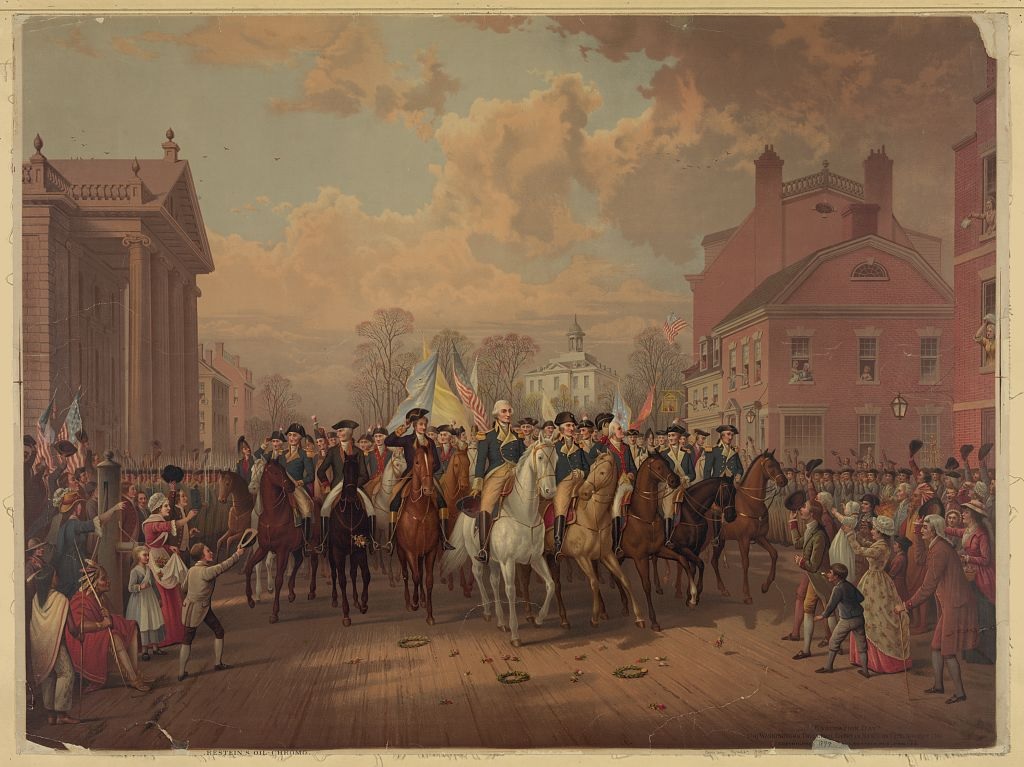Summary
Almost from the founding of the British colonies in North America, in the early 1600s, the colonial governments had tensions and disagreements with the British Crown and Parliament. As the colonies grew stronger, these differences intensified. While the French and Indian War, from 1754 to 1763, encouraged American and British cooperation in a common cause against French forces in New York, the war also, by strengthening the colonial military establishment, gave colonial leaders a sense of their ability to function independently.
Britain in 1763 emerged from the war victorious around the world, even as far as her possessions in India and in the Pacific. However, Britain needed continuing revenues to maintain her position as a world power, and she looked to the North American colonies for material support by being both a source of raw materials, and a market for British manufactures and other exports. But the colonies, having felt the strength of nationhood in the recent victory over the French, were in no mood to accept British restrictions on trade, and imposition of taxes to support British military ventures.
By 1775 the differences between the colonies and Britain had become so acute that the colonies began openly to offer military resistance, and in 1776 they formally declared their independence. At the same time, the North American troops that had recently been organized to fight the French were now called upon to fight for American independence.
In the ensuing Revolutionary struggle, New York State was a major theater of war. The reason is that the state lies at a strategic crossroads for the entire North American Continent. Toward the north, the Hudson River and the upper lakes—Lake George, Lake Champlain—offer a natural route to the St. Lawrence River and to Canada. To the west, the Mohawk Valley opens a magnificent gateway to the Great Lakes and to the American plains, with connection also to the Mississippi River. The City of New York, with its excellent harbor, commands sea routes for trans-Atlantic and West Indian trade, and for shipping up and down the Atlantic coast. It is no wonder that after early military engagements at Boston in 1775, New York City became the headquarters for the British, and a corresponding focus of Continental ambition, culminating in Washington’s victorious entry on evacuation day, November 25, 1783.
A major Continental action involving New York troops was the invasion of Canada in 1775. The plan was to win Canada over to the American cause, and prevent the British from using Canada as a base of operations launched from the St. Lawrence and the Great Lakes. But the Continental forces under General Montgomery, after initial successes along the Sorel River and in the St. Lawrence Valley, were decisively repelled on the night of 30–31 December 1775, when Montgomery was killed in the assault at the gate of the citadel of Quebec. The Continental troops, after wintering in the vicinity of Quebec, returned to New York, and the plan to invade Canada was abandoned.
On New York State territory, important early engagements of the Revolution centered upon possession of Manhattan, with its vital harbor and access to the Hudson River. Late in the summer of 1776 British forces invaded the southwestern shore of Long Island and pushed inland, driving Washington across the East River into Manhattan, then northwards into Westchester, and finally across the Hudson and through New Jersey into the region of Philadelphia. The British would continue to hold the City of New York for the rest of the war. However, the Continentals retained the Hudson Highlands and the Hudson Valley from West Point northwards to Lake Champlain. Also, the Continentals held the westward route along the Mohawk Valley. On the eastern shore of the Hudson, Poughkeepsie and Fishkill possessed strategic and economic importance as Continental points of communication to Connecticut and its seaports on Long Island Sound.
During 1776 and 1777 the Continentals built up their fortifications in northern and western New York State. At the same time, the British developed a plan to campaign from Canada against these very points: from the north along Lake Champlain and the Hudson Valley towards Albany; from the west towards Fort Schuyler and along the Mohawk Valley, also towards Albany, with the intention of joining Burgoyne. And from New York City a supporting British contingent would move up the Hudson to attack West Point and the fortifications in the Hudson Highlands.
As it turned out, the main British force under General Burgoyne was defeated at Saratoga, where he surrendered on 17 October 1777. Meanwhile, the British commander in the west, St. Leger, had been forced in August 1777 to abandon his effort to take Fort Schuyler. And Sir Henry Clinton, after inflicting damage upon Fort Montgomery, on the Hudson, on 6 October 1777, was compelled to return to New York in the aftermath of Burgoyne’s surrender. The Continentals, as a result of their major victory at Saratoga, gained virtually complete control of the northeastern mainland south of Canada—although the British continued to hold Manhattan and Long Island.
After 1777 the principal military activity in New York State consisted of maintaining and strengthening fortifications, and of defending the western frontier. Also, there were constant skirmishes and incidents on the outskirts of New York City, as in New Jersey, Westchester, and Long Island Sound. In the summer of 1779 a major action in New York State was the Sullivan expedition in the western region, against British-led Indians and loyalists. In addition, New York troops participated in Revolutionary campaigns in many other states.
After 1777 the British shifted the major focus of their strategy to Philadelphia and the American South, where the war was finally decided with the surrender of Cornwallis at Yorktown, Virginia, 19 October 1781. But peace was not formally established until 1783.
The Revolutionary period in North America has complex connections with concurrent and future events in other countries, especially France, where the success of the American Revolution had its effects upon the French Revolution and the Napoleonic Wars. There were also connections with other international conflicts, as for example involving Spain and her overseas possessions, especially in the Americas.
After 1783 the prosperity of New York State grew beyond imagining, especially after the opening in 1825 of the Erie Canal, which confirmed the state’s position at a pivotal point of global commerce and transport to and from the vast American West. This strategic potential had been seen long before. In fact, one of the major issues that the Revolution was fought over was the future control and development of the American West, because both sides were well aware that the colonies were destined eventually to expand all the way to the Pacific Ocean.





